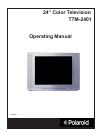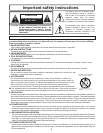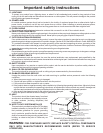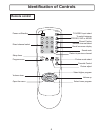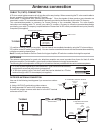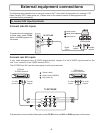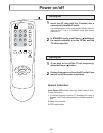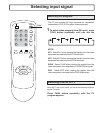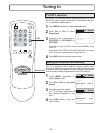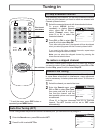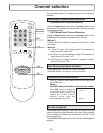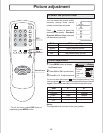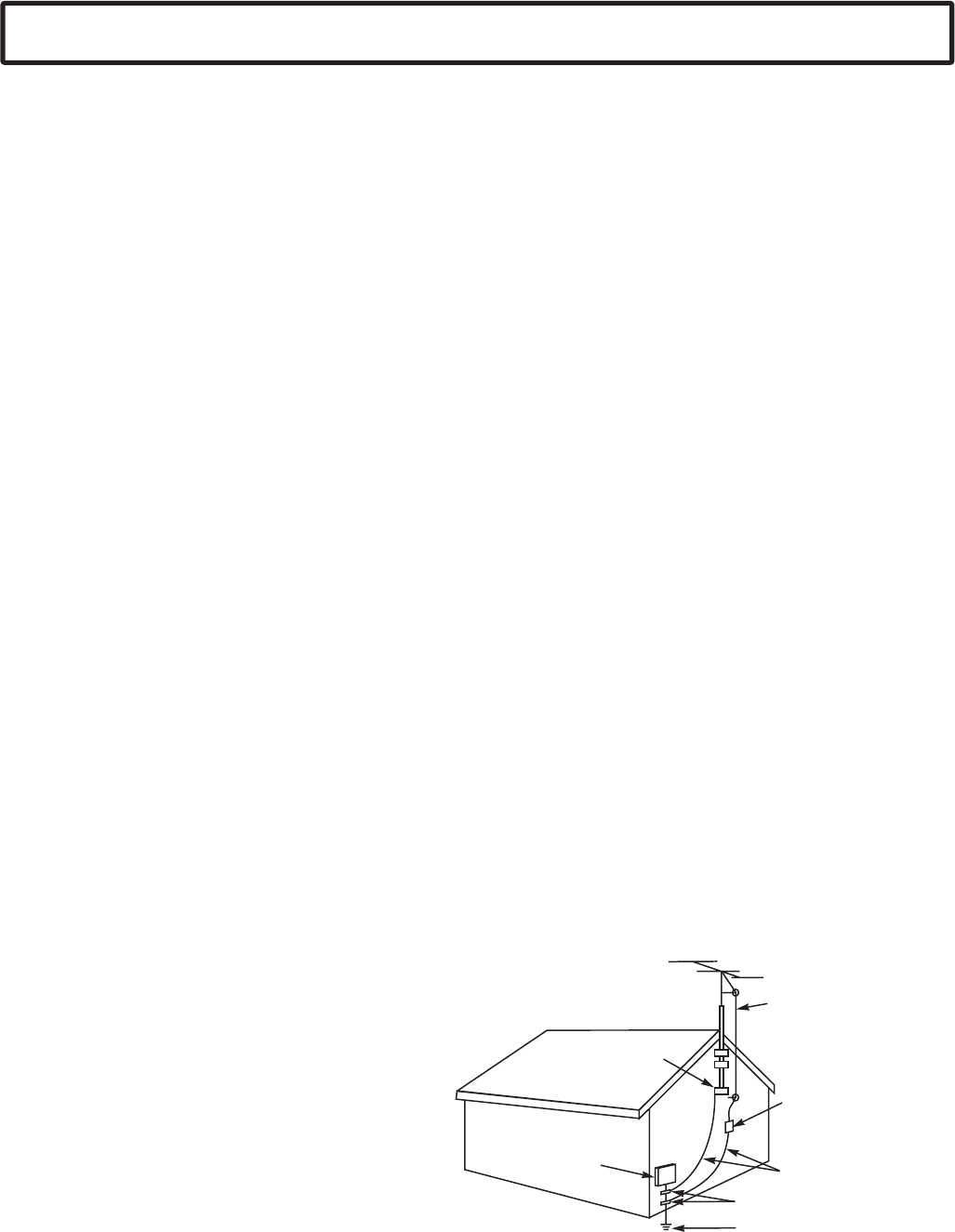
3
13. LIGHTNING
14. POWERLINES
15. OVERLOADING
16. OBJECTAND LIQUIDENTRY
17. OUTDOORANTENNAGROUNDING
18. SERVICING
19. REPLACEMENT PARTS
20. SAFETYCHECK
21. WALL OR CEILING MOUNTING
22. DAMAGE REQUIRING SERVICE
23. HEAT
24. NOTETO CATV SYSTEM INSTALLER
To protect your product from a lightning storm, or when it is left unattended and unused for long periods of time,
unplug it from the wall outlet and disconnect the antenna or cable system. This will prevent damage to the product
due tolightning andpower-line surges.
An outside antenna system should not be located in the vicinity of overhead power lines or other electric light or
power circuits, or where it can fall into such power lines or circuits. When installing an outside antenna system,
extreme careshould betaken tokeep from touchingpower linesor circuitsas contactwith them mightbe fatal.
Do not overload wall outlets and extension cords as this can result in a risk of fire or electric shock.
Never push objectsof any kind through openingsin the product asthey may touch dangerousvoltage points or short
out partsthat couldresult infire or electricshock. Neverspill orspray anytype of liquidon theproduct.
If an outside antenna is connected to the product, be sure the antenna system is grounded so as to provide some
protection against voltage surges and built-up static charges. Section 810 of the NationalElectric Code, ANSI/NFPA
70, provides information with respect to proper grounding of the mast and supporting structure, grounding of the
lead-in wire to an antenna discharge product, size of grounding conductors, location of antenna discharge product,
connection togrounding electrodes,and requirementsfor grounding electrodes.
Do not attempt toservice this product yourself asopening or removing covers mayexpose you to dangerousvoltage
or otherhazards. Referall servicingto qualified servicepersonnel.
When replacement parts are required, be sure the service technician uses replacement parts specified by the
manufacturer or those that have the same characteristics as the original part. Unauthorized substitutions may result
in fire,electric shockor otherhazards.
Upon completion of any service or repairs to this product, ask the service technician to perform safety checks to
determine thatthe productis inproper operating condition.
The product should be mounted to a wall or ceiling only as recommended by the manufacturer.
Unplug the product from the wall outlet and refer servicing to qualified service personnel under the following
conditions:
a. When the power-supply cord or plug is damaged.
b. If liquid has been spilled, or objects have fallen into the product.
c. If the product has been exposed to rain or water.
d. If the product does not operate normally afterinstallation by following the operating instructions.Adjust only those
controls that are covered by the operating instructions, as adjustment of other controls may result in damage and
will oftenrequire extensivework bya qualified technicianto restorethe productto itsnormal operation.
e. If the product has been dropped or the cabinet has been damaged.
f. When the product exhibits a distinct change in performance.
The product should be situated away from heat
sources such as radiators, heat registers, stoves,
or other products (including amplifiers) that
produce heat.
This reminder is providedto call the CATV system
installer's attention to Article 820-40 of the NEC
that provides guidelines for proper grounding
and, in particular, specifies that the cable ground
shall be connected to the groundingsystem of the
building, as close to the point of cable entry as
practical.
ANTENNA
LEAD IN
WIRE
GROUND
CLAMP
ELECTRIC
SERVICE
EQUIPMENT
NEC-NATIONALELECTRICALCODE
S2898A
ANTENNA
DISCHARGE UNIT
(NEC SECTION 810-20)
GROUNDING CONDUCTORS
(NEC SECTION 810-21)
GROUND CLAMPS
POWER SERVICE GROUNDING
ELECTRODE SYSTEM
(NECART250, PART H)
EXAMPLE OF ANTENNA GROUNDING AS PER
NATIONAL ELECTRICAL CODE
WARNING: FOR CONTINUED SAFETY, REPLACE SAFETY CRITICAL COMPONENTS
ONLY WITH MANUFACTURER'S RECOMMENDED PARTS (REFER TO SERVICE
LITERATURE).
Important safety instructions



